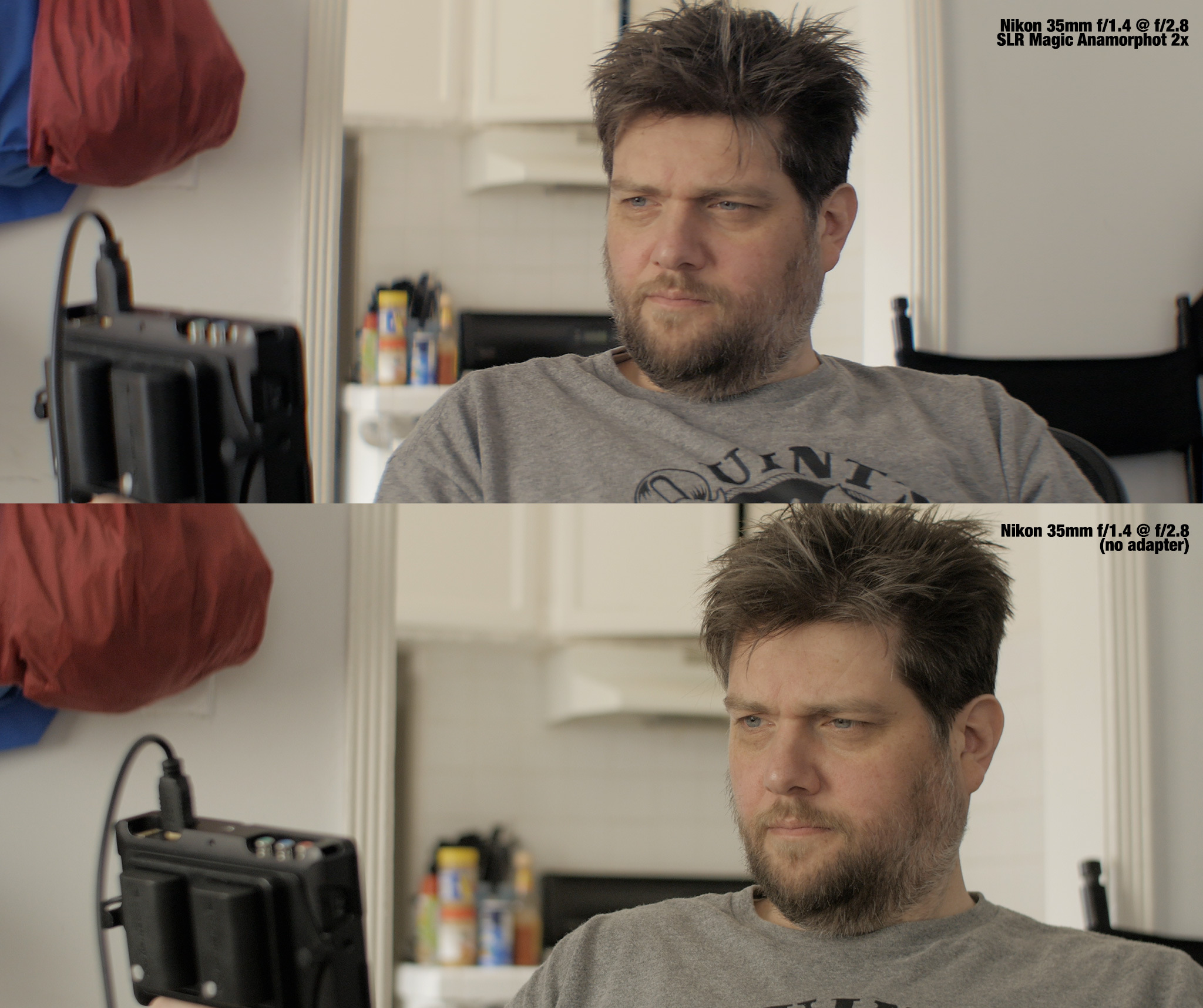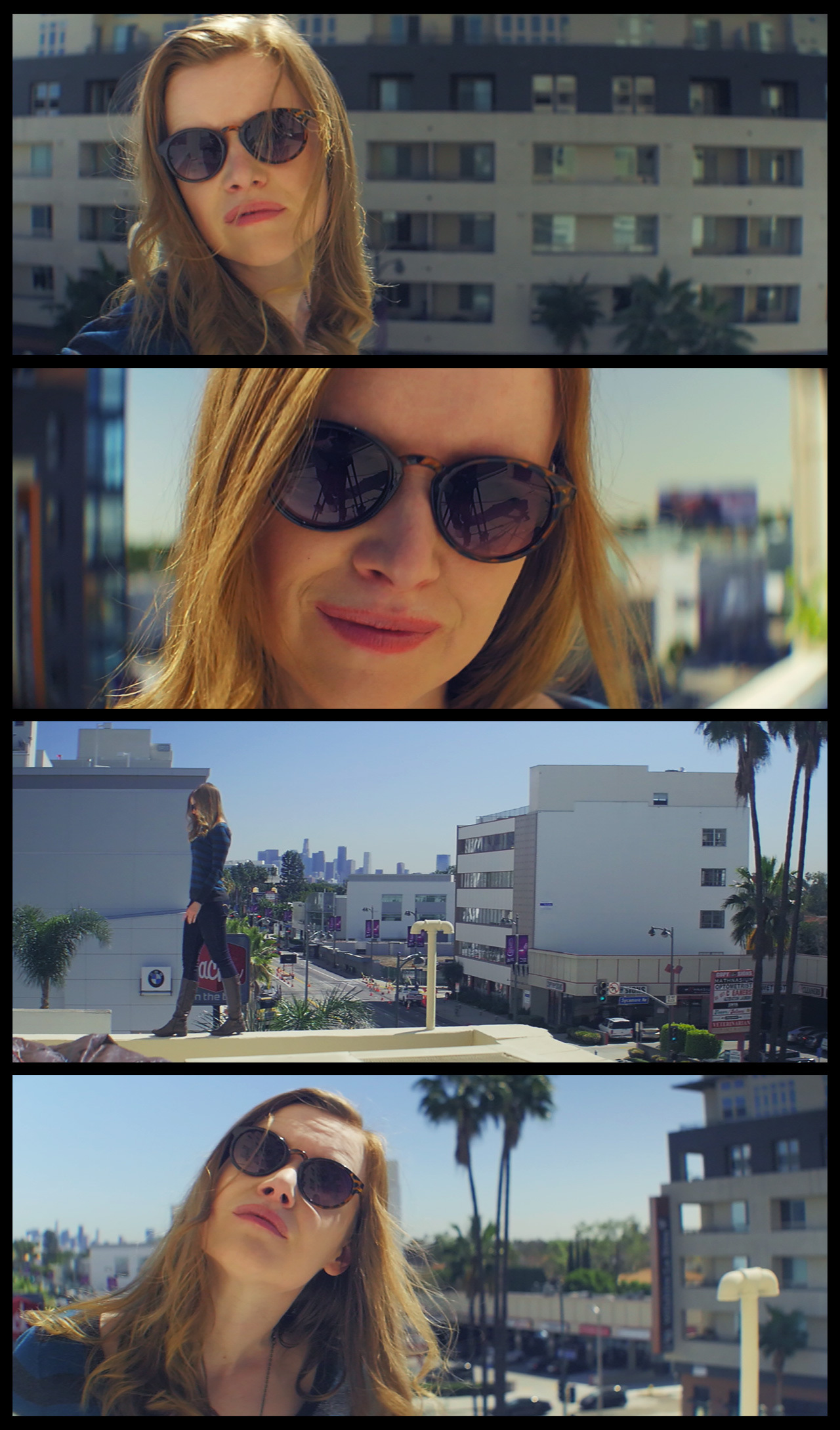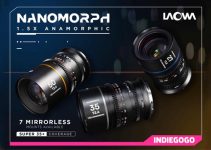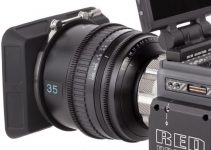Apart from making some awesome manual lenses for filmmaking, SLR Magic also offer a 1.33x Anamorpic adapter dubbed the “Anamorphot” adapter already (designed for use with 16 x 9 sensors), and with word of the GH4’s latest 4:3 Photo mode setting allowing for more use of the sensor in specific shooting settings, it appears that their long-awaited 2.0x Anamorphot adapter will be released very soon. Some shooters have already been doing test with demo/pre-production models, some of which we’ve covered here. The 2.0x “squeeze” is considered by many the be the “proper” way to do anamorphic as it produces a lovely 2.39:1 image and such lenses were designed for 4:3 sensors or film gates back in the day. The ARRI Alexa has this option, however, shooting on the Alexa is out of the budget for most of us. It would be fun to try it on the GH4 with the new 4K Photo mode which allows for a 4:3 frame in firmware update 2.0.
Los Angeles-based filmmaker Zak Forsman has also been testing the new (pre-release) 2.0x Anamorphot from SLR Magic on his Panasonic GH4. You can see his videos and frame grabs from the tests below.
He received a demo unit from SLR Magic recently, alongside SLR Magic’s new +1.8 achromatic diopter which brings the focal range within a couple feet of the camera.
There’s some excellent clips out there already, but many of them focus on landscapes and feel a bit “touristy” (for lack of a better word) in the way that they capture footage in public, often stealing shots from a distance. For my own purposes, I wanted to audition it with compositions more in line with a narrative filmmaker’s intent, so I focused on using a variety of lenses (35mm, 50mm, 85mm) to compose a series of wides, mediums and close-ups.
via Zak Forsman:
“I find Anamorphot 2x extraordinarily easy to use, and this is coming from someone without hands-on experience with the previous 1.33x version. The amount of time it took to get a feel for, to know what it can and cannot do, wasn’t more than a day. And most of that was gaining a sense of where to set the NEAR/NORMAL ring for any given situation. It quickly becomes second-nature as with so many aspects of operating a camera.
Also critical to learn is the alignment process. I carry a small LED flashlight with me to flare the lens which generates a horizontal blue flare that I can use to square up the Anamorphot properly.
I love shooting with the 35mm taking lens. I’m not look for monster bokeh 100% of the time and this pairing feels very cinematic to me. Adding the +1.8 diopter onto it for extreme close-ups makes it sing. I don’t have any diopters of lesser strength but SLR Magic does make a kit that contains a +1.33 and +0.33 that I would consider essential for making full use of the Anamorphot 2x.”
See the 4K Youtube version of one of his tests below:
This test was shot in 1080p, hence why it appears softer than the 4K test above.
The first test above – BARNSDALL ART PARK was shot in 4K on the Panasonic GH4 in 16×9 mode. Zak opted not to use the 4×3 mode, which would be ideal for 2x anamorphic adapter, however, in doing so he would have lost the ability to record in 24p and use the HDMI output for monitoring purposes. Hence he shot 16×9 and performed a center crop from the 3.55:1 master to maintain a 2.39:1 aspect ratio. In 4K, this results in a final resolution of around 2.5K, plenty if you finish in 2K.
However, for the second clip for the ROOFTOP AT WILSHIRE & LA BREA segment, he was interested in finding out whether the performance of the adapter would be different in 1080p. This explains why that second video looks a little softer than the first. After extracting the 2.39:1 center crop, It’s probably only a little better than 720p.
If you want to shoot 2x anamorphic and keep an acceptable level of detail, you can do 1080p if you have a 4×3 sensor, or shoot 4K in either mode.

The full 3.55:1 frame as captured by the GH4 in 16×9 mode.
All in all, this is shaping up as a fantastic and affordable alternative to shooting with actual anamorphic lenses. It’s not intended for run and gun style shooting, and there is little room for error when it comes to aligning it properly. However, like many tools in the artist’s kit, once you know it intimately, it’s not going to be a restriction on your creativity.
For more of Zak’s work check out his website here.
The SLR Magic anamorphic adapters appear to be a viable option for filmmakers going for the epic anamorphic look, but don’t necessarily have the budget to rent Anamorphic cine lenses or the inclination use projector anamorphic lenses and go the DIY route.
The 2.0x Anamorphot is due for release soon with pricing yet to be finalised. The 1.33x Anamorphot with Achromatic Diopter Kit (+0.33, + 1.33) is available from B&H for $999 (which includes a $299 discount from the $1,298 original price)
Disclaimer: As an Amazon Associate and a participant in other affiliate programs, we may earn a small comission from qualifying purchases made through some of the links on this page - at no additional cost to you.






